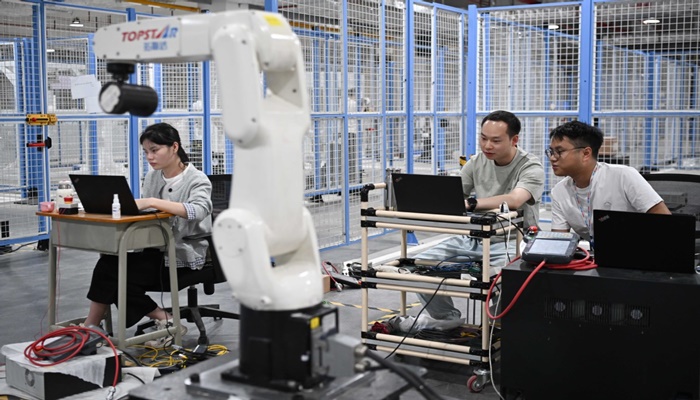Although COVID-19 triggered a large and lasting shift to working from home, this type of flexible work arrangement didn’t start with the pandemic. It had been rising for years, even before the pandemic, posing serious challenges for human resource managers. Working from home reduces the real-time visibility that employees have in the physical sphere of the workplace. This makes it difficult to monitor work behaviour and increases the risk that employees will shirk their responsibilities.
Against this background, it has been suggested to place more emphasis on workers’ output, and use performance pay as an incentive device. While this suggestion has intuitive appeal, a crucial question remains: what type of performance pay should employers provide to those who work from home? Our research shows the importance of distinguishing between individual and collective performance pay.
Individual performance pay
Linking pay to an employee’s individual performance is usually thought to provide strong incentives as it offers the tightest connection between individual variations in performance and variations in pay. However, individual performance pay does not provide incentives for mentoring, helping on the job and collaboration. This is particularly problematic if employees work from home.
Research has shown that working from home negatively affects collaboration and information sharing among employees. This reflects that employees spend less time in face-to-face interactions with their colleagues and managers. Face-to-face interactions play an important role in flexible and speedy communication, building cooperative social relations at work and being committed to a common corporate culture.
Individual performance pay does not prevent remote employees’ tendency to lose their sense of belonging to the organisation. Quite the contrary, it may even reinforce the propensity to focus on personal achievement and neglect collaboration and corporate objectives.
Collective performance pay
Collective payment schemes stand as an alternative to individual performance pay. Group bonuses tie an employee’s remuneration to the performance of a team or organisational department. Profit sharing links the employee’s remuneration to the performance of the entire organisation.
Collective performance pay provides incentives for mentoring, helping on the job and collaborating. Since the individual employee’s remuneration not only depends on their own performance but also on the performance of other members of the team or organisation, the employee has an incentive to provide help and cooperation.
Collective schemes such as profit sharing may even help build employer-employee relationships based on trust and mutual loyalty. These schemes signal that the employer is benevolent and willing to voluntarily return to employees a portion of the fruits of their collective efforts.
The incentive effects of collective performance pay are particularly important if employees work from home. Employers can provide collective performance pay to counteract the adverse consequences of working from home and to restore collaboration and orientation towards organisational goals. But employers must be mindful of a potential free-rider problem. Even though collective performance pay give people incentives to collaborate with colleagues, it may not incentivise them to work hard.
To the extent that there is a serious free-rider problem, a combination of collective and individual performance pay can induce employees to collaborate and to work hard. When free-riding is less severe, collective performance pay alone may be enough.
Evidence from the UK
Using Understanding Society, a large and representative and UK panel dataset, our study analysed the link between working from home and performance pay for the years before the pandemic.
We found that employees working from home are less likely to receive only individual performance pay. Instead, they are more likely to receive collective performance pay – with or without the individual component.
This confirms the idea that employers tend to avoid rewarding only individual performance, as it reinforces the loss in a cooperative work climate under working-from-home conditions. Instead, they provide collective incentives to restore a cooperative work climate.
Shift towards shared capitalism
How employers compensate their staff plays an important role in incentivising them. A rise in working from home fosters a shift towards shared capitalism: as more employers provide working from home opportunities to more and more employees, they increasingly use collective schemes such as profit sharing to ensure collaboration and commitment. The spread of working from home makes them more reluctant to provide only individual performance pay.
Our research shows here that linking an employee’s remuneration not only to their own performance but also to team or organisational outcomes provides incentives for mentoring, helping on the job and information sharing. A combination of collective and individual performance pay induces employees not only to collaborate, but also to work hard.
Since working from home tends to undermine a cooperative work climate, employers may use collective performance pay to counteract the adverse effects of working from home. Our findings show that employers are more likely to use collective performance pay for working-from-home employees to restore collaboration and orientation towards organisational goals.




















